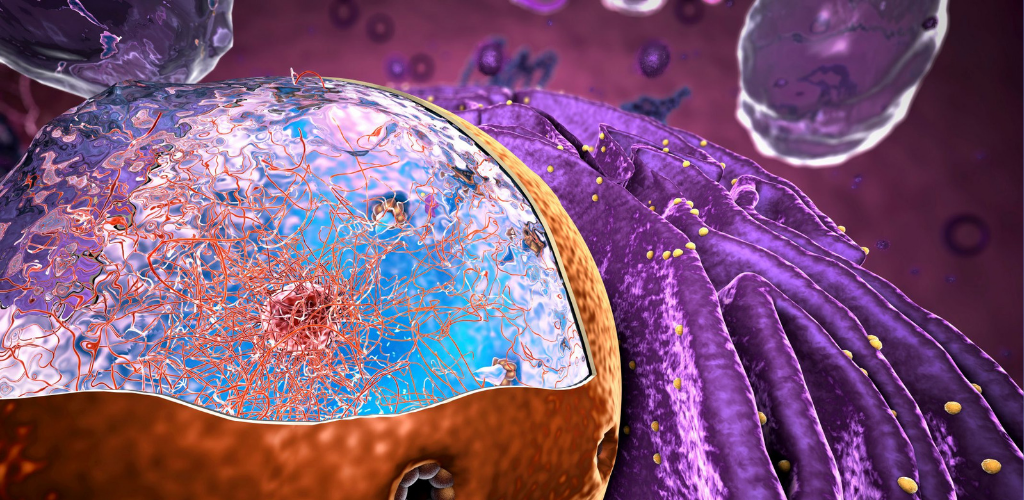Spatial genomics is an emerging field that combines the power of genomics and spatial analysis to reveal the molecular and cellular diversity within tissues and organs. By preserving the spatial context of genomic features, such as DNA, RNA, and proteins, spatial genomics can provide insights into the structure, function, and interactions of cells in their native environment.
Why is spatial genomics important?
Traditional genomic methods, such as bulk sequencing or single-cell sequencing, can generate a wealth of information about the molecular composition and expression of cells. However, these methods often require the disruption of the tissue architecture, which can result in the loss of spatial information and the inability to capture the heterogeneity and complexity of tissues.
Spatial genomics overcomes these limitations by enabling the simultaneous analysis of multiple molecular components within intact tissues, at single-cell or subcellular resolution. This allows researchers to map the spatial distribution and co-localization of genomic features, and to correlate them with phenotypic traits, such as cell type, state, function, or disease.
Spatial genomics can also reveal the spatial relationships and interactions between cells, such as cell-cell communication, cell-matrix interactions, and cell-niche interactions. These interactions are crucial for maintaining tissue homeostasis, development, and regeneration, as well as for driving pathological processes, such as inflammation, infection, and cancer.
How is spatial genomics performed?
There are various technologies and platforms available for performing spatial genomics, depending on the type and number of molecular components to be analyzed, the resolution and throughput required, and the tissue sample size and quality.
Some of the most common spatial genomics techniques are:
- Imaging-based methods, such as in situ hybridization (ISH) and in situ sequencing (ISS), which use fluorescent probes or barcodes to label and detect specific genomic features within tissue sections, and then image them using microscopy or sequencing. These methods can achieve high resolution and multiplexing, but are limited by the availability and specificity of probes, and the complexity and cost of imaging and analysis.
- Sequencing-based methods, such as spatial transcriptomics (ST) and spatial multi-omics, which use microarrays, beads, or slides to capture and extract mRNAs or other molecules from tissue sections, and then profile them using next-generation sequencing (NGS) or mass spectrometry (MS). These methods can achieve high throughput and coverage, but are limited by the spatial resolution and accuracy, and the requirement of high-quality tissue samples.
What are the applications and benefits of spatial genomics?
Spatial genomics has a wide range of applications and benefits across various fields of biology and medicine, such as:
- Developmental biology: Spatial genomics can help elucidate the molecular mechanisms and pathways that govern tissue formation, patterning, and differentiation, as well as the spatial and temporal dynamics of gene expression and regulation during development.
- Neuroscience: Spatial genomics can help uncover the molecular and cellular diversity and complexity of the brain, as well as the spatial organization and connectivity of neural circuits and networks, and their roles in cognition, behavior, and disease.
- Immunology: Spatial genomics can help characterize the spatial distribution and function of immune cells and molecules within tissues, as well as their interactions with pathogens, antigens, and other cells, and their roles in immune response, tolerance, and pathology.
- Oncology: Spatial genomics can help identify the spatial heterogeneity and evolution of tumor cells and subclones, as well as the tumor microenvironment and its influence on tumor growth, invasion, metastasis, and therapy response.
What are the challenges and future prospects of spatial genomics?
Spatial genomics is a rapidly evolving field that faces several challenges and opportunities for improvement and innovation, such as:
- Increasing the resolution, multiplexing, and integration of spatial genomics methods, to enable the simultaneous analysis of multiple molecular components at single-cell or subcellular level, and across different spatial scales and dimensions.
- Developing new probes, labels, and platforms for spatial genomics, to expand the range and specificity of genomic features that can be detected and analyzed, and to reduce the cost and complexity of spatial genomics experiments.
- Enhancing the quality and accessibility of spatial genomics data and tools, to facilitate the storage, processing, visualization, and interpretation of spatial genomics data, and to enable the comparison and integration of spatial genomics data with other types of genomic and phenotypic data.
- Applying spatial genomics to new biological and clinical questions and scenarios, to explore the spatial aspects of biology and disease that have been overlooked or underappreciated, and to discover new biomarkers, targets, and therapies for diagnosis, prognosis, and treatment.
Conclusion
Spatial genomics is a new frontier in biology that allows us to explore the molecular and cellular diversity and complexity of tissues and organs in their spatial context. By combining genomics and spatial analysis, spatial genomics can reveal the structure, function, and interactions of cells in their native environment, and how they relate to phenotypic traits and disease processes.
Spatial genomics has a wide range of applications across various fields of biology and medicine, such as developmental biology, neuroscience, immunology, and oncology. However, spatial genomics also faces several challenges and limitations that need to be overcome, such as improving the resolution, multiplexing, and integration of spatial genomics methods, developing new probes, labels, and platforms for spatial genomics, enhancing the quality and accessibility of spatial genomics data and tools, and applying spatial genomics to new biological and clinical questions and scenarios.
In this blog, we have introduced the concept and importance of spatial genomics, the different techniques and platforms for performing spatial genomics, and the applications and benefits of spatial genomics. We have also discussed the challenges and future prospects of spatial genomics, and provided some helpful resources and examples for further learning.
We hope you have enjoyed reading this blog and learned something new about spatial genomics. If you have any questions or comments, please feel free to leave them below.




